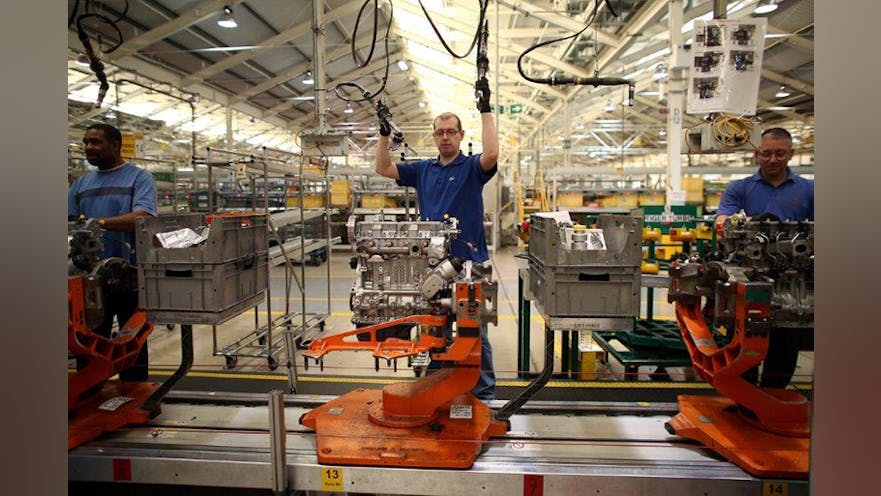Manufacturing Sector Sheds 78,000 Jobs Over Three Months Amid Strikes and Economic Challenges
The US manufacturing sector continues to face challenging times, as evidenced by the loss of 78,000 jobs over the last three months, according to data released by the Bureau of Labor Statistics (BLS). This ongoing decline underscores a broader struggle within the sector, influenced by labor strikes and other economic pressures. The October jobs report highlights how these factors have collectively impacted employment in manufacturing, as well as the sector’s outlook in the coming months.
October Manufacturing Jobs Data Reveals Significant Losses
In October, the manufacturing sector lost a reported 46,000 jobs, marking a steep decline following losses in August and September. This recent data points to a sustained contraction in manufacturing employment, with 26,000 jobs lost in August and an additional 6,000 in September. These preliminary figures highlight a concerning trend, as the sector grapples with labor disputes and disruptions across its workforce.
One major contributor to September’s job loss was the transportation equipment manufacturing industry, which shed 44,000 jobs, largely due to a significant strike involving 33,000 machinists at Boeing. This labor action, initiated by the International Association of Machinists and Aerospace Workers (IAM) on September 13, has led to disruptions within Boeing’s production lines and affected its supply chain. As a result, several Boeing suppliers, including Spirit Aero, have been forced to furlough workers temporarily, further amplifying the ripple effect throughout the sector.
Impact of the Boeing Strike on Manufacturing Jobs
The Boeing strike underscores the critical impact of labor disputes on employment figures within manufacturing. The IAM machinists’ strike at Boeing, a major player in the US aerospace industry, has had significant repercussions. The union, which initially rejected Boeing’s contract offers, remains in negotiation with the company, which extended a new offer to the union as recently as Thursday. If an agreement is reached, it could potentially stabilize employment figures within Boeing and its supplier network.
Additionally, the strike by 5,000 IAM machinists at Textron, an aerospace and defense contractor, has contributed to the sector’s job losses. The Textron strike, which began on September 23 and concluded on October 21, further weighed on employment data, given the sector’s sensitivity to such disruptions.
Long-Term Trends: Manufacturing Sector Job Losses Over the Past Year
The recent job losses in manufacturing are not isolated incidents but reflect a broader trend. Over the past six months, the sector has lost a total of 85,000 jobs, representing a 0.7% decline. Over the last 12 months, manufacturing employment is down by 50,000 jobs, or 0.4%. While the sector saw a strong month in November 2023, with a gain of 25,000 jobs, growth has stagnated in 2024. The last positive month for job gains in manufacturing was July, with a modest increase of 6,000 positions, and the highest monthly gain for the year was in April with 7,000 jobs added.
These numbers illustrate an ongoing struggle within the manufacturing industry to maintain consistent job growth, particularly amid shifting economic policies, rising operational costs, and labor challenges.
Policy Perspectives: Calls for Support and Tax Reforms
Amid these job losses, the National Association of Manufacturers (NAM) has called for government action to help stabilize and grow the manufacturing workforce. NAM emphasizes the need for policies that support capital investment and alleviate regulatory burdens. Specifically, they are advocating for a restoration of tax incentives for companies that expand or upgrade their facilities and equipment, which could drive job creation and stimulate growth within the sector.
NAM has also urged Congress to provide long-term stability by extending key provisions in the Tax Cuts and Jobs Act of 2017, set to expire in 2024. The organization has warned of a “tax armageddon” if these provisions lapse, creating potential tax burdens that could further strain the manufacturing industry. NAM’s policy recommendations underscore the importance of a supportive tax environment to foster competitiveness and resilience in the face of economic and labor pressures.
Broader Economic Context: Factors Influencing Manufacturing Jobs
Several broader economic factors continue to influence job trends in manufacturing, including trade policies, supply chain issues, and energy costs. For instance, the Biden administration’s recent discussions around limiting liquefied natural gas (LNG) exports have raised concerns within the industry. According to a recent study, such restrictions could place nearly a million jobs at risk across various sectors, including manufacturing, as energy-intensive industries face potential cost increases.
Manufacturing Sector’s Outlook for 2024
Looking forward, the manufacturing sector faces both challenges and opportunities. The resolution of labor disputes, such as the Boeing strike, could restore some stability to the sector, while favorable tax policies and regulatory reforms could create a foundation for renewed growth. However, without strategic support, the sector may continue to struggle with job losses and stagnating employment.
Given the current economic landscape, it remains crucial for policymakers to address the needs of the manufacturing sector. Supportive policies could enhance the sector’s competitiveness and resilience, helping to prevent further job losses and enabling manufacturers to navigate the complex challenges posed by labor, trade, and energy considerations.
In conclusion, the October jobs report highlights significant headwinds for the US manufacturing sector, with 78,000 jobs lost over the past three months alone. As the sector navigates labor disputes and economic challenges, its future will largely depend on the response of policymakers and the successful implementation of supportive measures that can help revitalize manufacturing jobs and sustain growth within this crucial industry.
Source : Swifteradio.com


